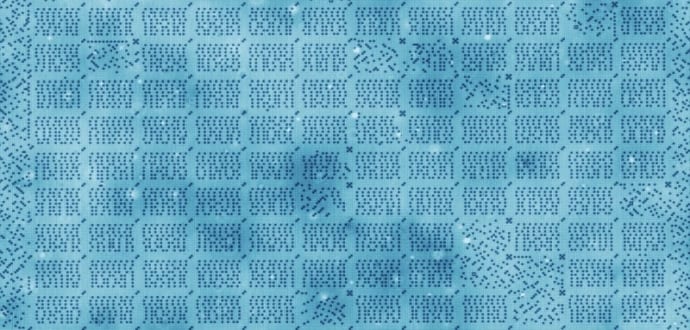This 1-kilobyte hard drive with one atom per bit is only 100 nanometers wide
A team of nanoscientists at the Delft University of Technology in the Netherlands have created a microscopic storage system that encrypts every bit with a single atom that allows them to fit a kilobyte in a space under 100 nanometers across. In other words, this world’s smallest and densest hard drive could store all the world’s books on device the size of a postage stamp.
“It is as if we have invented the atomic-scale printing press,” said Sander Otte, lead scientist at Delft University of Technology told Gizmodo.
The scientists could write a 1 kilobyte (8,000 bits) message at 500 terabits per square inch. That’s around 100 times more info per square inch than the most efficient hard drive ever created. For instance, the 4-terabyte hard drives that are available today are about 1 terabit per square inch. The reason is that in contrast to this new system, they use hundreds or thousands of atoms to store a single bit.
“In theory, this storage density would allow all books ever created by humans to be written on a single post stamp,” said Professor Otte in a news release.
The storage array (“hard drive” isn’t exactly accurate, but gets the point across) is strangely elegant in its organization, as it has to be if it is going to work at an atomic level.
“Every bit consists of two positions on a surface of copper atoms, and one chlorine atom that we can slide back and forth between these two positions,” explained Professor Otte. “Because chlorine on copper forms into a perfectly square grid, it’s easy (relatively, anyway) to position and read them. If the chlorine atom is up top, that’s a 1; if it’s at the bottom, that’s a 0. Put 8 chlorine atoms in a row and they form a byte.”
In 1959, Feynman speculated that if we had a platform allowing us to arrange individual atoms in an exact orderly pattern, it would be possible to store one piece of information per atom.
He said this in his famous lecture ‘There’s Plenty of Room at the Bottom’. This would be the limit at how small classical computer transistors could become.
Professor Feynman wrote: “But I am not afraid to consider the final question as to whether, ultimately – in the great future – we can arrange the atoms the way we want; the very atoms, all the way down! What would happen if we could arrange the atoms one by one the way we want them?”
In honour of this amazing foresight, the Delft University team encoded this very section of Feynman’s lecture in a grid 100 nanometres across, a hundredth the width of a human hair. But, the only problem is that for the technique to work, a temperature of almost -200 degrees Celsius (-328F) must be reached in a near-perfect vacuum.
However, this is strictly lab-bound, at least for now. The chlorine-copper array is only stable in a clean vacuum and at 77 kelvin — about the temperature of liquid nitrogen. Anything past that and heat will disrupt the organization of the atoms.
Professor Otte said: “In its current form the memory can operate only in very clean vacuum conditions and at liquid nitrogen temperature (77 K or -195C), so the actual storage of data on an atomic scale is still some way off. But through this achievement we have certainly come a big step closer.”
In spite of this, the scientists believe that further development of the ground-breaking technique could immensely reduce the size of our increasing need for huge data centres.
The research was published in the journal Nature Nanotechnology.

